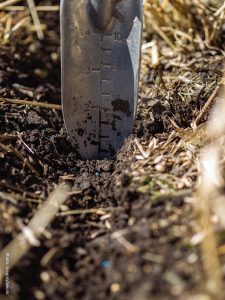Seed traits: What are the standards?
This list covers the options available for canola seed traits and describes official standards (if any) for each trait.
Western Canada Rapeseed and Canola Recommending Committee (WCC/RRC) is the industry body that recommends to the CFIA which canola cultivars get registered. The CFIA collects a lot of information from the WCC/RRC as well as company trial data to approve cultivars for registration, but ultimately the recommendation for registration is based on quality traits for oil (including erucic acid and saturated fats), protein and glucosinolate levels to ensure it meets the canola quality definition.
Raymond Gadoua, the WCC/RRC coordinator, says that while WCC/RRC does track yield, lodging, disease resistance and more, there is no registration standard for these traits. Gadoua does keep unpublished short descriptions for each cultivar that goes through the WCC/RRC, but he says post-registration information from company trials and third-party comparisons, like the Canola Performance Trials at canolaperformancetrials.ca, are probably more relevant to the grower.
Herbicide resistance
- Liberty Link – BASF.
Resistant to group-10 glufosinate - Roundup Ready – Bayer.
Resistant to group-9 glyphosate - Clearfield – Corteva.
Resistant to group-2 IMI products, including Ares - Truflex – Bayer.
Resistant to group-9 glyphosate - Falco – Cibus.
Resistant to group-2 sulfonyl-urea
These traits and their labeling are maintained by the gene-developer. Stacked traits are now available, specifically for Truflex and Liberty Link.
Standards: The WCC/RRC no longer requires any data to support herbicide tolerance claims, but herbicide tolerant candidates require disclosure regarding their herbicide tolerant nature.
Blackleg resistance
- Major gene resistance – industry
developed labels using molecular tests - Quantitative resistance – no
standardized testing for claims on
this resistance

Standards: WCC/RRC trials determine the overall level of blackleg resistance, with ratings based on a comparison to blackleg levels in the highly-susceptible Westar cultivar, which is grown as a blackleg check at blackleg trial nursery. Cultivars with a severity index less than 30 per cent of Westar are considered resistant “R”, but WCC/RRC does not have a minimum standard for blackleg. Susceptible cultivars can be approved for registration, but this is rare. These trials do not determine which resistance genes are in a cultivar or how much quantitative resistance is present; they only average field performance at these locations. Canola growers will often discover that cultivars with an R rating can show fairly high levels of blackleg when grown in a situation where resistance is overcome by the particular blackleg races prevalent in a field. As a result of this, an R-gene labeling model as designated by Canola Council’s Blackleg Steering Group is included in the WCC/RRC procedures for use on a voluntary basis by canola variety developers. Research is underway to develop a standard evaluation for adult plant or quantitative resistance.
Clubroot resistance
Commercial canola cultivars often make specific claims for clubroot resistance.
Standards: WCC/RRC has protocols for greenhouse or field testing to determine a level of resistance, but these are not published and there is no WCC/RRC standard to determine the level of clubroot resistance and the genetic source of resistance.
Sclerotinia stem rot resistance
Sclerotinia resistance labels are used, often based on company interpretations of WCC/RRC approved protocols for field testing.
Standards: WCC/RRC has a protocol for evaluating sclerotinia stem rot resistance in the field, but companies can use their own methodology. There is no industry standard to compare the levels of sclerotinia resistance. Gadoua says standards have been proposed over the years, but there has been no agreement.
Verticillium stripe
Standards: Currently there is no disease rating scale or screening process to determine cultivar susceptibility to this pathogen. Protocols will be presented at the WCC/RRC pathology sub-committee meeting this winter to help develop an industry standard.
Pod-shatter trait
Seed companies promote cultivars as having a pod-shatter trait or a heightened level of pod integrity. This is used to promote them as suitable for straight combining or late swathing.
Standards: There is no industry standard for the level of pod shatter tolerance. Gadoua says a sub-committee is looking into it, but WCC/RRC doesn’t have a protocol yet.
End-use traits
- Nexera – Corteva. High oleic low linolenic
fatty acid oils - Victory and Invigor Health – Cargill. High
oleic low linolenic fatty acid oils - High Erucic Acid Rapeseed (HEAR)
Standards: For these specialty crops grown under identity-preserved (IP) programs, companies are responsible to maintain the quality standards they require from their end users. However, cultivars with a high oleic and/or low linolenic acid profile still have to meet the same WCC/RRC standards for erucic acid and glucosinolates.
HEAR is an exception. It goes through the specialty subcommittee for unusual oils that don’t meet the canola definition. These must follow strict IP to keep them out of the canola market channels.
Other traits
- Yield is measured against WCC/RRC checks in inspected small-plot trials. Once commercial, these can be compared to any product in any trial type
(no standards). - Lodging resistance is tested for, and candidate cultivars often come with lodging scores, but not always. The standard protocol is a rating scale from 1 (standing straight) to 5 (flat). Gadoua notes that a variety that consistently lodges likely won’t come to market.
- Maturity is no longer a WCC/RRC requirement, and there is no standard to determine short-, medium- or long-season cultivars. It often comes down to company promotions based on their own data. Gadoua notes that maturity tends to be getting later since the season is getting a little longer.
- Height is tracked by the WCC/RRC, but there is no standard labelling. Companies may provide their own data, particularly if the height is notable (short size with high yield, for example).
- Swathability/harvestability has no WCC/RRC standard, so a company that claims “good harvestability” for a cultivar may be basing it on their own internal trials.
- Oil and protein content is tracked by the WCC/RRC (as percentages and compared to check cultivars), with minimum standards for oil content. Protein content below industry standards can eliminate a cultivar from commercialization, Gadoua notes. Oil and protein content is important for buyers and end-users of canola, but these are not factors in a grower’s seed decision with no monetary implications at the farm-level.
Canola Performance Trial data, available at canolaperformancetrials.ca, provide third party comparisons for yield, lodging, height and days to maturity. These rates are based on protocols agreed to by the CPT committee, which includes growers and industry representatives.
New seed treatments for 2021
Canola growers looking for a new source of flea beetle control or a seed treatment for blackleg have a couple of new options for 2021.
Saltro. This new fungicide seed treatment from Syngenta protects canola from airborne blackleg infection at the cotyledon stage. The active ingredient, adepidyn, is a new Group-7 fungicide. Blackleg that starts early on cotyledons tends to cause the highest levels of stem damage and yield loss later in the season. In high risk situations – fields with a history of high levels of blackleg – this seed treatment protection provides an option to foliar in-crop sprays that some growers use for early protection.
Buteo Start. Bayer will offer “Buteo start” as an insecticide seed treatment option on Dekalb canola hybrids for 2021. Other seed brands will also offer Buteo seed treatment, so farmers can ask their seed representatives if that’s an option for them. Buteo start has a new active ingredient, flupyradifurone, for improved protection from striped and crucifer flea beetles. The company says that rapid uptake and systemic translocation from cotyledon to leaf margins allow for a astrong plant right off the start, even in dry conditions. Buteo start will be used in combination with other seed treatments that provide the fungicide and base insecticide active ingredients. For more flea beetle seed treatment options, go to canolaencyclopedia.ca and see the flea beetles chapter.
Register for Canola Week: December 1-3, 2020
This year, Canola Week joins together the Canola Industry Meeting, Canola Discovery Forum (CDF), and Canola Innovation Day and will be held online. This series of virtual sessions will focus on updating all players in the canola industry on the state of the industry, trade, end-use products & markets, research and innovation, cutting edge technologies, as well as agronomic issues and the 2020 crop. The focus for the CDF sessions is canola fertility. Since 2020 marks the 50th anniversary of the Canola Industry Meeting, we’ll also be recognizing Keith Downey’s legacy at this milestone event.
More information on the agenda and registration is coming soon.
Welcome Nate Ort
 Nate Ort from Carman, MB joins the Canola Council of Canada agronomy team. Nate has a diploma from the University of Manitoba School of Agriculture (class of 2013), a bachelors of science in agriculture (agronomy) from the U of M (class of 2017) and is just finishing up a masters degree in plant science, focusing on soybean phenology and physiology. Nate loves working with farmers and researchers. “I think it’s important to bridge the gap between the two,” he says. “Farmers have questions and ideas, and researchers tackle these ideas. Then we at the CCC relay the information and findings back to farmers. That’s what I am most excited for. Taking good, strong scientific data and bringing it to the farm and seeing if it can work for them.”
Nate Ort from Carman, MB joins the Canola Council of Canada agronomy team. Nate has a diploma from the University of Manitoba School of Agriculture (class of 2013), a bachelors of science in agriculture (agronomy) from the U of M (class of 2017) and is just finishing up a masters degree in plant science, focusing on soybean phenology and physiology. Nate loves working with farmers and researchers. “I think it’s important to bridge the gap between the two,” he says. “Farmers have questions and ideas, and researchers tackle these ideas. Then we at the CCC relay the information and findings back to farmers. That’s what I am most excited for. Taking good, strong scientific data and bringing it to the farm and seeing if it can work for them.”




